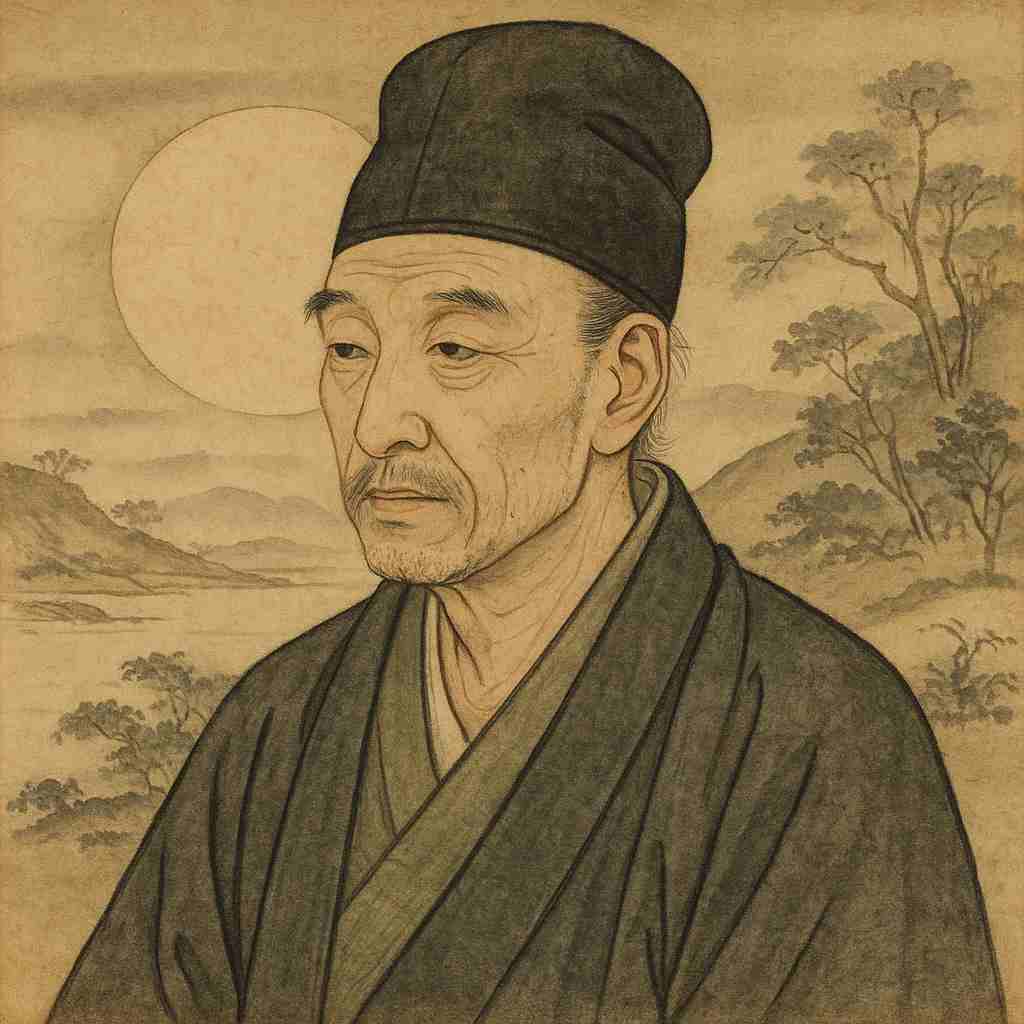Spring Rain (Japanese)
Yosa Buson
1716 to 1784

Through the mist, a world anew,
Leaves glisten bright, grass sparkles with dew.
Gentle rain of spring, softly falling,
Bringing scents and winds, nature calling.
春の雨 優しく降り
生命(いのち)の息吹 運んでくる
Clouds drift away, skies turn to blue,
Rain fades to memory, fresh and new.
春の雨 匂いや風を 連れてくる
Yosa Buson's Spring Rain
This reinterpretation of "Spring Rain" by Yosa Buson offers a beautiful homage to the original, capturing the essence of renewal and transient beauty while weaving in musicality through rhyme and rhythm. Below is an analysis of this adaptation, focusing on its imagery, themes, and connection to Buson’s haiku tradition.
Yosa Buson, a celebrated Japanese haiku poet of the Edo period, was known for his vivid and painterly approach to poetry, which often evoked serene landscapes and the fleeting nature of life. The haiku form inherently emphasizes brevity, simplicity, and the interplay of human experience with nature. This musical reinterpretation builds on these elements, transforming the haiku into a lyrical composition that preserves its meditative tone while expanding its scope.
Analysis of Imagery and Themes
-
Evocation of Renewal:
The opening lines,"Through the mist, a world anew, / Leaves glisten bright, grass sparkles with dew,"
draw on Buson’s ability to encapsulate the essence of spring rain. The mist and glistening imagery suggest both clarity and mystery, a hallmark of spring’s transitionary nature. The dewdrops, metaphorically likened to jewels, emphasize nature’s revival and freshness, echoing the Japanese aesthetic principle of wabi-sabi—finding beauty in the transient and imperfect. -
Gentleness of Rain:
"Gentle rain of spring, softly falling, / Bringing scents and winds, nature calling."
Here, the rain is personified, portrayed as a life-giver and carrier of sensory delights. The line "bringing scents and winds" alludes to how rain amplifies the smells of earth and the stirring of breezes, evoking a connection between the physical and spiritual renewal. -
Integration of Japanese Text:
The inclusion of:"春の雨 優しく降り / 生命(いのち)の息吹 運んでくる"
(Spring rain, softly falling / carrying the breath of life)
anchors the reinterpretation firmly in its cultural roots. These lines expand on Buson’s focus, introducing "inochi no ibuki" (the breath of life), which links the rain directly to vitality and growth. This is a thoughtful and culturally resonant choice, reflecting haiku’s tradition of blending sensory and existential observations. -
Ephemerality and Transition:
"Clouds drift away, skies turn to blue, / Rain fades to memory, fresh and new."
These concluding lines capture the impermanence central to Japanese poetic tradition, particularly the concept of mono no aware—the awareness of the beauty in fleeting moments. The transformation of rain into memory parallels human life’s cycles, encouraging reflection on how transient moments leave lasting impressions.
Structural and Musical Qualities
The rhyming couplets (e.g., "new" and "dew," "falling" and "calling") add a lyrical quality that echoes the musicality often found in Japanese haiku through rhythmic syllable patterns. While Buson’s original haiku uses a concise 5-7-5 syllable format, this reinterpretation extends the poetic canvas, allowing for more descriptive flourishes while maintaining the meditative tone.
The alternating lines between English and Japanese create a harmonic interplay, akin to the contrast of light and shadow in traditional ink paintings. This bilingual approach enriches the text, bridging cultural and linguistic worlds much as Buson’s poetry often fused art and nature.
Conclusion
This reinterpretation of "Spring Rain" not only honors Yosa Buson’s poetic legacy but also transforms it into a song-like meditation on renewal and impermanence. The interplay of vivid imagery, bilingual text, and thematic depth reflects a thoughtful engagement with the haiku tradition while making it accessible to a broader audience. Like the rain it describes, this poem gently refreshes and uplifts, inviting readers to linger in the serene beauty of spring.
This text was generated by AI and is for reference only. Learn more
Want to join the discussion? Reopen or create a unique username to comment. No personal details required!



Comments
No comments yet. Be the first to comment!